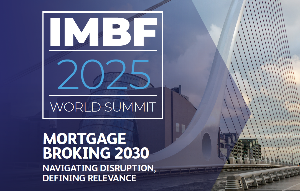
ANZ is adding two more OCR cuts to its economic forecast after next month’s expected drop to 3.25%.
The retail trading bank has pencilled in cuts in August and October taking the OCR down to a low of 2.5%. It’s previous forecast was a 3% trough.
In the fourth quarter of next year it is has placeholder OCR hikes taking it back up to a neutral level of 3%.
ANZ chief economist Sharon Zollner says recent data – QSBOm Performance of Services Index, electronic card transactions – on balance suggest the economic recovery, while certainly well underway, is looking a bit more stop-start than the bank’s forecasts imply.
In addition, she says persistent uncertainty on the global trade front and a darker and murkier outlook for global growth is likely to dampen investment and broader risk-taking to some extent.
“We now think the economy will require a bit more support from monetary policy to ensure the recovery remains on track.
“It’s early days, but we expect the RBNZ forecast revisions will have the same broad flavour in next month’s Monetary Policy Statement.”
“Our forecast for annual average growth in 2027 has been revised up from 2.4% to 2.6% as stimulatory monetary policy settings eventually flow through,”
The bank has revised down its forecasts for GDP and the housing market.
House price expectations had been downgraded to 4.5% growth for the rest of the year. Previously, it had anticipated growth of up to 7%.
Annual average GDP growth is expected to be at 1% for this year, down from a predicted 1.3% and rise to 2.6% next year, which is down from its estimate of 2.9%.
“Our forecast for annual average growth in 2027 has been revised up from 2.4% to 2.6% as stimulatory monetary policy settings eventually flow through,” Zollner says.
ANZ will also be reducing its CPI inflation forecasts once the first quarter Consumer Price Index (CPI) is released next week.
Zollner says the bank has not centralised the risks around global markets and growth because of tariff wars. Like the RBNZ it is taking a ‘wait and see’ approach.
But trade tensions and ongoing uncertainty surrounding the global growth and markets outlooks had very likely weighed on confidence across both households and businesses, “eroding a key pillar of support to the recovery”, she says.
“In practice, risks are tilted towards the 100bp of OCR cuts we are forecasting arriving more quickly than a steady 25bp at each meeting.
“With inflation pressures looking contained the RBNZ is in a good position to respond vigorously to downside risks should they manifest.”
She says should the New Zealand dollar hold up better than it has in previous global ructions – should the US dollar come under pressure – also implies a risk the OCR will need to do more work.
“Of course, for the RBNZ the buck stops with the medium-term CPI outlook. While we still expect inflation to stabilise ar about 2% over the medium term, we need to bake recent weakness in oil prices and a slightly wider-for-longer negative output gap into our CPI forecasts.





Comments
No comments yet.
Sign In to add your comment